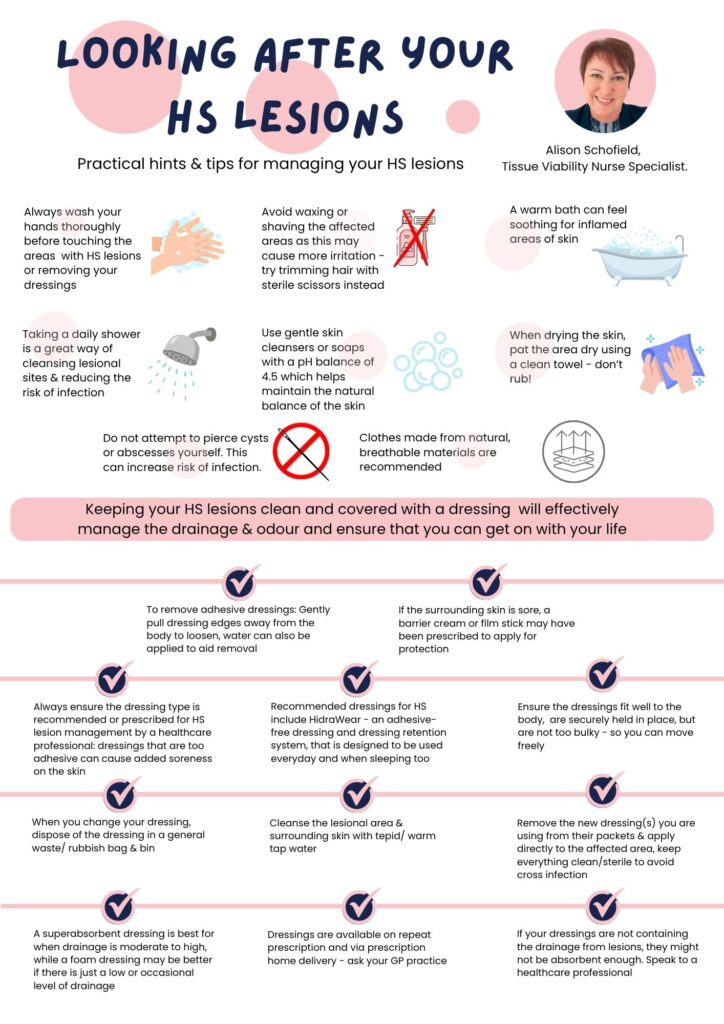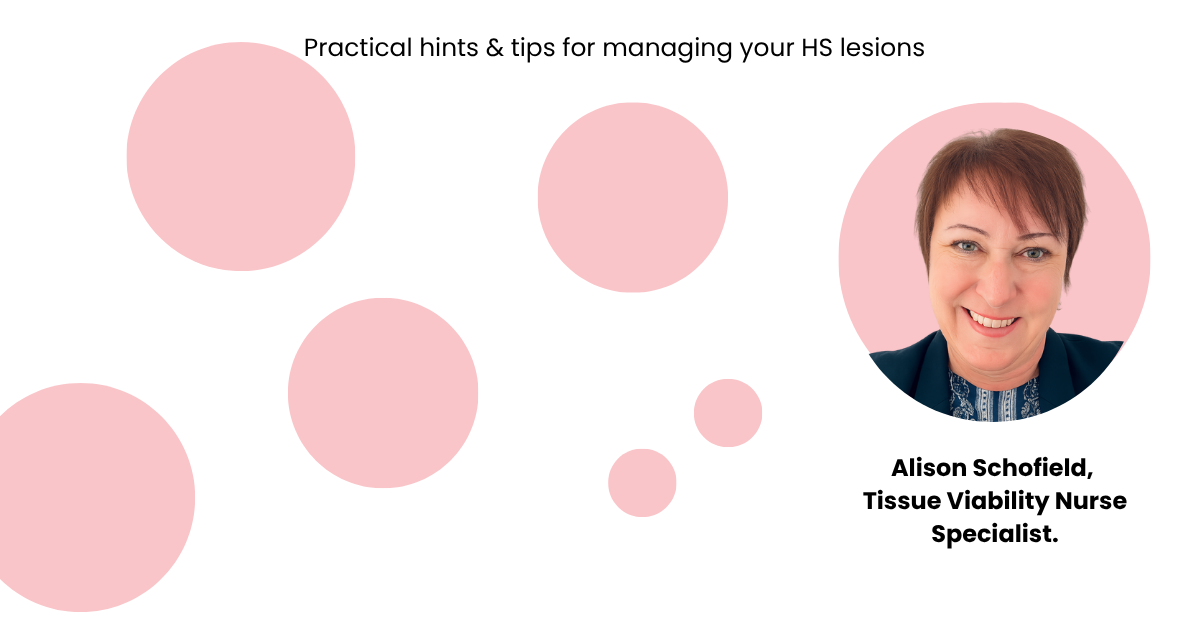Alison Schofield, Tissue Viability Nurse Specialist, on how to care for your HS lesions and support your skin health.
Alison is a registered nurse specialising in tissue viability with over 20 years’ experience of working in the NHS, supporting, and developing services in health and social care to provide better patient outcomes.

Looking after your HS lesions –
Practical tips for managing your HS lesions
- Always wash your hands thoroughly before touching the areas with HS lesions or removing your dressings.
- Avoid waxing or shaving the affected areas, as this may cause more irritation – try trimming hair with sterile scissors instead.
- A warm bath can feel soothing for inflamed areas of skin.
- Taking a daily shower is a great way of cleansing lesional sites & reducing the risk of infection.
- Use gentle skin cleansers or soaps with a pH balance of 4.5, which helps maintain the natural balance of the skin.
- When drying the skin, pat the area dry using a clean towel – don’t rub!
- Do not attempt to pierce cysts or abscesses yourself. This can increase the risk of infection.
- Clothes made from natural, breathable materials are recommended.
Keeping your HS lesions clean and covered with a dressing will effectively manage the drainage & odour and ensure that you can get on with your life.
- To remove adhesive dressings, gently pull dressing edges away from the body to loosen. Water can also be applied to aid removal.
- If the surrounding skin is sore, a barrier cream or film stick may have been prescribed to apply for protection.
- Always ensure the dressing type is recommended or prescribed for HS lesion management by a healthcare professional: dressings that are too adhesive can cause added soreness on the skin.
- Recommended dressings for HS include HidraWear – an adhesive-free dressing and dressing retention system, that is designed to be used every day and when sleeping too.
- Ensure the dressings fit well to the body, are securely held in place, but are not too bulky, so you can move freely.
- When you change your dressing, dispose of the dressing in a general waste/ rubbish bag & bin.
- Cleanse the lesional area & surrounding skin with tepid/ warm tap water.
- Remove the new dressing(s) you are using from their packets & apply directly to the affected area, keep everything clean/sterile to avoid cross-infection.
- A superabsorbent dressing is best for when drainage is moderate to high, while a foam dressing may be better if there is just a low or occasional level of drainage.
- Dressings are available on repeat prescription and via prescription home delivery – ask your GP practice.
- If your dressings are not containing the drainage from lesions, they might not be absorbent enough. Speak to a healthcare professional.With care,
The HidraWear Team


